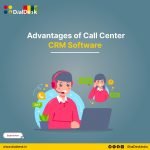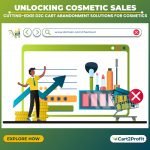
As a business owner, you probably know that customer lifecycle management (CLM) is the process of managing the interactions your customers have with your company. But do you understand what CLM is and how it works?
In this blog post, we’ll provide a brief overview of Customer Lifecycle Management, and share some tips on how to manage each stage of the customer’s journey with your business.
Customer Lifecycle Management is a process that enables companies to identify and understand their customers, assess their needs, and create a customer experience that meets those needs. CLM can help to improve customer loyalty and build better relationships with customers.
In today’s business world, it is essential for companies to have a well-defined and managed customer lifecycle. This involves understanding and managing the different stages that a customer goes through as they interact with your company. This can be difficult, but with the help of a good customer lifecycle management (CLM) system, it can be done.
80% of companies’ marketing budgets are spent on acquiring shoppers; however, for every 1% of shoppers who become repeat customers, a company’s revenue will increase by about 10%.” – Adobe
Customer Lifecycle Management (CLM) is a process that helps companies understand and manage the different stages that a customer goes through while interacting with them.
With the customer lifecycle management approach, companies can have a more holistic understanding of their customers, leading to improved customer service, greater customer satisfaction, and better business outcomes. It is a game-changer because it unifies marketing and sales under the same strategy, making it easier to work together and deliver the best customer experience.
These stages can vary from company to company, but generally, they fall into three categories: Acquisition, Engagement, and Retention.
CLM helps companies manage each stage in a way that leads to long-term customer loyalty and profitability.
Acquisition Stage
The acquisition stage begins when a customer first interacts with your company. During this stage, you must ensure that you capture all of the important data about your new customer. This includes things like their name, contact information, and product preferences. You also need to create an account for them on your website or application and set up their preferences.
Engagement Stage
The engagement stage is where you start to convert your new customer into a paying customer. During this stage, you need to ensure that they are happy with your product and that they are taking the necessary actions to convert their leads into paying customers. You should also focus on providing them with the best possible customer service experience.
Retention Stage
The retention stage is where you focus on keeping your current customer happy and profitable. You should continue to provide them with high-quality products and services, while also ensuring that they have all the information they need to keep using your product. You can also focus on driving traffic to your website from the channels that your customer uses most.
Managing the First Phase: Acquisition
The acquisition is a critical first step in customer lifecycle management. It involves understanding your customer and their needs and then identifying and acquiring new customers. This process can be time-consuming and difficult, but it’s essential to building a successful business.
Here are some tips for managing the acquisition process:
There are several steps you can take in this phase to increase your chances of success.
“A commitment to customer experience results in up to 25% more customer retention and revenue than sales or marketing initiatives.” –Bizsum
Managing the customer’s engagement phase is essential to driving long-term customer loyalty. If a company can keep customers engaged through all three phases of the customer lifecycle, it can create a powerful and lasting connection with its customers.
In the first phase, the company establishes a relationship with the customer. During this phase, the company should focus on providing quality products and services that meet the customer’s needs.
The second phase is when the customer begins to use the product or service and starts to become familiar with it. This phase is important because it allows the company to fine-tune its product or service and ensure that it meets the customer’s needs.
The third and final phase is when the customer fully adopts the product or service and becomes a repeat user. During this phase, the company should focus on maintaining customer loyalty by providing value-added features and services.
By managing each of these phases effectively, companies can build lifelong relationships with their customers.
Retention is key to a successful customer lifecycle management (CLM) program. CLM professionals must focus on retaining customers who are current and active users of the company’s products or services. Techniques for retaining customers during the fourth phase include providing continued value, developing lasting relationships, consistently meeting customer expectations, and providing ample support.
When it comes to retaining customers during this phase, companies must provide continued value. This could take the form of new features or enhancements to an existing product or service. It can also mean constantly reaching out to customers to see how they are using the product or service and making modifications based on their feedback.
By continually offering new and innovative features, companies can keep their customers engaged and loyal.
Developing lasting relationships with customers is also important during the last phase of the customer life cycle. This means building trust and confidence in both parties. It can be difficult to maintain this level of trust over time, but by taking steps to build relationships organically, companies can create a stronger connection with their customers.
Consistent communication is also key in developing lasting relationships with customers. This means responding quickly to customer inquiries and keeping them updated on changes or updates to the product or service.
Finally, providing ample customer support is critical during this phase of the customer life cycle. This could take the form of 24/7 availability, quick responses to customer inquiries, and regular updates and enhancements to products or services.
Providing enough support can help keep customers happy and loyal, and it can help ensure that they continue using a company’s products or services.
With DialDesk, you can focus on your customers’ experiences and build lasting relationships with them. By offering 24 x 7 × 365 customer support, skilled customer service agents will handle the support of your clients and provide quality services that result in new business for you.
There is no one-size-fits-all answer when it comes to managing the customer lifecycle, but there are a few fundamental principles that can be applied to virtually any organization.
The customer lifecycle management (CLM) process begins with understanding the customer and their needs. After understanding the customer, CLM practitioners track key customer interactions, including those with sales, marketing, and support personnel. This information is used to create customer profiles and track customer sentiment.
Additionally, CLM practitioners keep track of what new products or services are being developed for customers and monitor how these new offerings impact the customer’s current business processes. Finally, CLM practitioners use this data to identify trends and make decisions about how to improve the customer experience.
The customer lifecycle management approach is a game-changer for many businesses. It’s not just about having a strong customer base but also about nurturing that base over time. Learning from their interactions is important so that you can get to know your customers better and improve the value of your services and products.
DialDesk offers customer support solutions so businesses can acquire new customers with minimum hassle! We offer a plethora of business services, some of which include cloud telephony, inbound calling, outbound calling, and lead filtration. DialDesk is very competitively priced so don’t wait – call now for a free demo!
Author Profile

Latest Post
 CRMJuly 12, 2024Advantages of Call Center CRM Software
CRMJuly 12, 2024Advantages of Call Center CRM Software Cart Abandonment SolutionAugust 22, 2023D2C Cart Abandonment Solutions for Fitness and Sports Equipment
Cart Abandonment SolutionAugust 22, 2023D2C Cart Abandonment Solutions for Fitness and Sports Equipment Cart Abandonment SolutionAugust 21, 2023D2C Cart Abandonment Solutions for Electronics and Gadgets
Cart Abandonment SolutionAugust 21, 2023D2C Cart Abandonment Solutions for Electronics and Gadgets Cart Abandonment SolutionAugust 21, 2023D2C Cart Abandonment Solutions for Cosmetic Brands
Cart Abandonment SolutionAugust 21, 2023D2C Cart Abandonment Solutions for Cosmetic Brands
Author Profile Varuna Raghav As a CX and marketing specialist, Varuna Raghav has more than 15+ years of experience in […]
Read more
is the apt framework developed for deploying the right mix of People, Process & Technology in a business with a clear eye on increasing lead conversion, reducing customer acquisition & management cost, and winning customers for life.